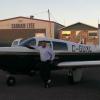Glide slope not coming in
-
Members Online
- AspiringOwner
- MDMooney
- ad5ut
- Joe Hood
- 1980Mooney
- cbarry
- eman1200
- MikeOH
- KHyde
- Hank
- varlajo
- 201er
- Flyler
- 201Steve
- BeachLifeMoon
- JoeM
- Glenn
- redbaron1982
- McMooney
- amillet
- Ragsf15e
- jcolgan
- sgrooves
- Oklahoma Mooney
- Alan Fox
- Aerodon
- Old Chub
- hammdo
- Aaviationist
- Sabremech
- ragedracer1977
- PierreZee
- chrisburdzy98


Recommended Posts